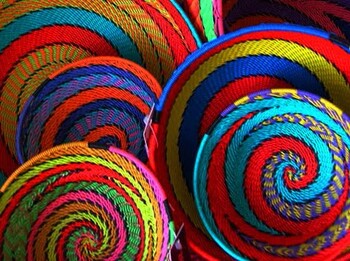Weavers Weaving

Over the centuries, the process of weavers weaving has always been an integral part of society. The status of weavers, in society, has always changed but the process and technique of weavers weaving is as solid as it has ever been. A handloom weaver is quite a rare hobbyist these days mainly due to the introduction of powerlooms into the world of weaving. However, the art of handloom weaving requires a lot more skill, also see, Cheap Display Cases is more satisfying and quite popular amongst weaving-fans even today.
The Initial Days of Loom
Powerlooms hold an advantage over weavers weaving with their hands mainly in terms of speed. Their ability to put out a lot more finished products checkout, Display Shelves in a shorter time-duration makes it a more-popular mode of weaving. However, for hobby purposes, the powerloom has nothing to offer to someone who is interested in learning more about the art-form.
The main feature checkout, Traxxas RC Cars of handloom weavers, in the earlier years, was that it was a professional only for men. The batten-process required a lot of strength to get things done, which meant that men would need to do it. However, the women would also become a part of the process by spinning thread at home, also see, Household Collectibles creating things they needed for their personal use. The men, however, would work for commercial purposes, putting their skills have a look at, RC Buggies Competition to good use when it came to making money.
Bringing Women into Weaving
The main problem for these handloom weavers is that the introduction of powerlooms took the skill checkout, Boat Building Kits quotient down and brought up production speed. However, the introduction of technology allowed women to jump into the process and, today young women have also become integral to the entire process. With female checkout, RC Boat Plans weavers weaving on the same machines, they became an additional source of income for the family checkout, Collectible Foreign Coins and became an integral part of the industry.
They started working on up to four looms at one time and even worked at keeping the looms clean or oiled. Each female also look at, GPS Drawing was accompanied by a little girl who was used as an assistant and was also required to learn the craft checkout, Entertainment Memorabilia by watching other weavers weaving. Children below 13-years of age were given special cards to indicate that they were associated with a powerloom mill. This would allow them to attend school in the afternoon while working in the mill during the morning.
By 14-years of age, they would turn up full-time at the mill and start working alongside the other weavers weaving on those looms. The job of fixing the looms or solving problems, however, would fall also see, Stained Glass into mechanical engineering and that job would normally be held by a man. These men, also called "Tacklers", would supervise the entire process and make sure that safety standards also see, Link header were adhered to. Women had to keep their hair tied while several health problems would strike them from various elements of the work.
Cotton dust was a major cause behind breathing issues while hearing loss, from the noise of the machines, was quite common. There was a lot of thread-sucking to pull it through the eye of the needle and each needle was draped in carcinogenic oils, which left the weavers in worse shape than ever.
From Industry to Art
Despite all the problems that weavers faced, there was major movement towards making weaving an art-form. Started in the mid 19th century, by William Morris, a writer & artist, the introduction of machines to the entire process had obviously taken away the magic and replaced it with mechanical precision. However, William Morris actively campaigned to give those still working with their hands, the status of artisans or craftsman. Weavers weaving on machines were placed into an industrial sector while those who continued working with handlooms, and not powerlooms, were given a higher status in society.
The idea of romanticising the concept of working with your hands and making simple, traditional forms of cloth or fabric using hand-weaving was essential in raising the profile of the hobby and making it as popular as it is today. From Britain, the idea of weavers weaving with their hands as an art-form moved into Europe and from Europe, it moved into North America. Weavers gained a lot of prominence thanks to the kind of exposure that writers like Morris and John Ruskin provided them over the years.
Today, you can find weavers weaving all across the world as this small but intense craft-form has become extremely popular and important as a hobby. From North America to Australia, every single country try, RC Tanks has added its own flavour to this form and made it one of the most diverse hobbies that you can find today.
 Fairy Doll Making Fairy Doll Making
Fairy doll making is not just an activity reserved for little girls, with an equal number of adult d |
 Zagi Models Zagi Models
Zagi models are a unique type of RC plane that looks and flies like a glider, mostly. Zagi models ar |
 RC Sailplanes RC Sailplanes
The market for remote control model aircrafts has grown a lot in the recent times. These days, you c |
 Collectible Teapots Collectible Teapots
Collectible teapots form a hobby that is extremely focused in terms of the object of desire as well |
 Chocolate Kids Birthday Cake Recipe Chocolate Kids Birthday Cake Recipe
Kids birthday cakes can be as plain or as decorative as you wish. But you need a good basic recipe t |